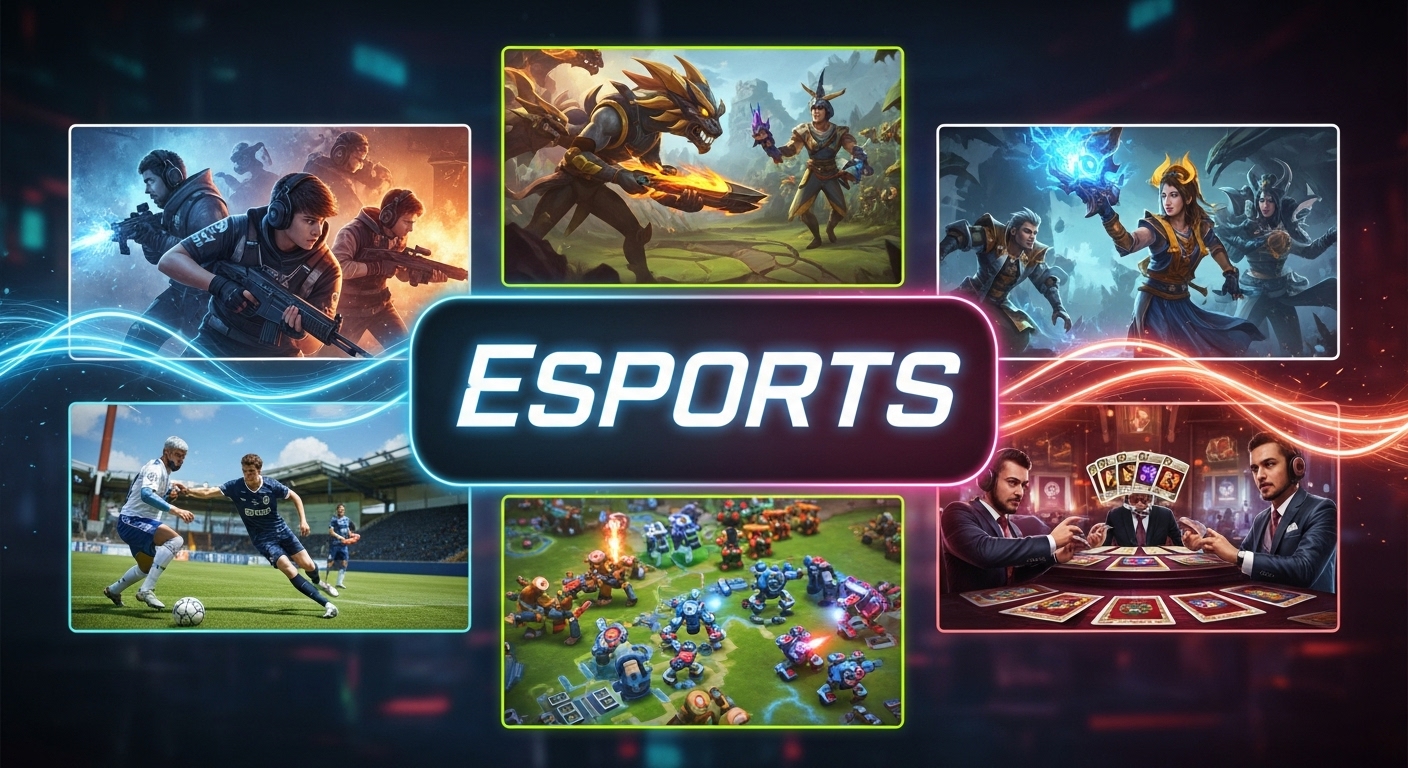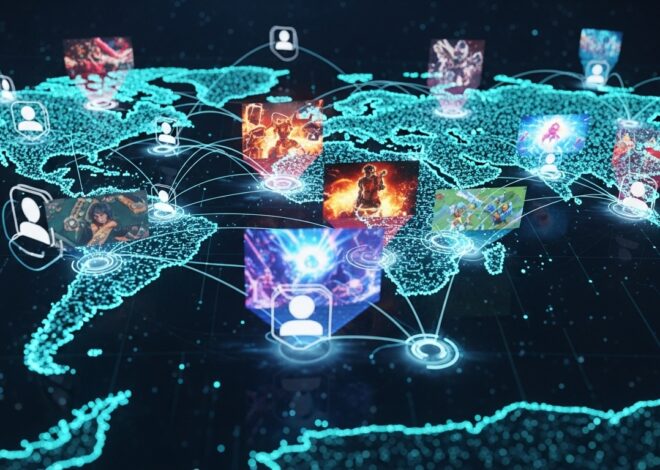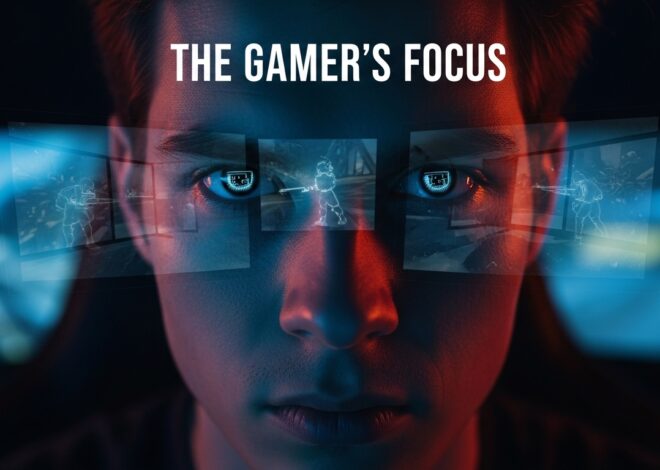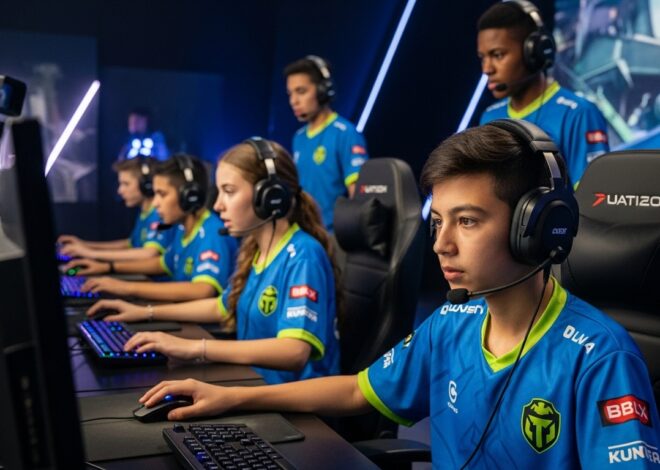
The Rise of Esports: From Niche Hobby to Global Phenomenon
Introduction: Understanding Esports
Esports, or electronic sports, has emerged as one of the fastest-growing entertainment industries in the world. What began as casual video game competitions among friends has evolved into a global phenomenon attracting millions of viewers, professional players, and substantial investment. The term “esports” refers to competitive, organized gaming where players or teams compete in video games for prizes, recognition, and ranking.
The appeal of esports lies in its blend of strategy, skill, teamwork, and entertainment. Unlike traditional sports, esports transcends physical limitations, allowing individuals from diverse backgrounds to compete on a level playing field. From multiplayer online battle arenas (MOBAs) to first-person shooters (FPS) and real-time strategy (RTS) games, the spectrum of esports is wide and varied.
The rise of streaming platforms, online tournaments, and professional leagues has transformed gaming into a legitimate career path and entertainment medium. Today, esports is not just a pastime; it is a cultural and economic powerhouse shaping technology, media, and social interaction worldwide.
The Origins of Competitive Gaming
The roots of esports can be traced back to the late 1970s and 1980s, when early video games like Space Invaders and Pac-Man captured the public imagination. Arcade tournaments offered players a chance to showcase their skills, often drawing local attention and small prizes.
The 1990s marked a significant shift with the advent of home gaming consoles and multiplayer PC games. Titles like Quake, StarCraft, and Counter-Strike introduced competitive gaming to a broader audience, emphasizing strategy, coordination, and reflexes. Organized competitions began to appear, forming the foundation for professional esports leagues.
During this period, the internet played a pivotal role in connecting players. Online multiplayer platforms allowed global competition, enabling tournaments that were previously limited by geography. Early esports communities emerged through forums, fan sites, and LAN (local area network) events, creating the social backbone for the industry.
The Evolution of Esports Genres
Esports encompasses a variety of game genres, each offering unique competitive dynamics.
Multiplayer Online Battle Arenas (MOBAs), such as League of Legends and Dota 2, are among the most popular esports titles. These games focus on teamwork, strategy, and tactical execution. Players must coordinate with teammates, manage resources, and control objectives to achieve victory. MOBAs have massive professional circuits and attract millions of viewers.
First-Person Shooters (FPS) like Counter-Strike: Global Offensive, Call of Duty, and Overwatch emphasize reflexes, precision, and situational awareness. FPS games often combine individual skill with team coordination, making them highly engaging for both players and spectators.
Real-Time Strategy (RTS) games, including StarCraft and Age of Empires, demand strategic planning, resource management, and adaptability. While RTS games have a smaller esports presence today, they laid the groundwork for competitive gaming and continue to influence modern esports design.
Fighting games, such as Street Fighter, Tekken, and Super Smash Bros., highlight one-on-one skill and timing. Fighting game tournaments have passionate fan bases and emphasize mastery of mechanics and mental agility.
Sports simulations like FIFA, NBA 2K, and Madden bring virtual versions of traditional sports into the competitive arena. These games attract both sports enthusiasts and gamers, bridging the gap between physical and digital sports.
The Role of Streaming and Digital Media
Streaming platforms have been instrumental in the rise of esports. Services like Twitch, YouTube Gaming, and Facebook Gaming allow players to broadcast live matches to global audiences. Viewers can watch professional tournaments, learn strategies, and engage with communities through live chat.
Streaming has transformed esports into a spectator sport comparable to traditional athletics. High-profile tournaments now feature professional commentary, analysis, and live production, creating an immersive experience for fans. The ability to watch matches in real time has cultivated a global audience, driving sponsorships, advertising, and merchandise sales.
Additionally, content creators and influencers play a key role in popularizing esports. Their personalities, skills, and engagement with fans contribute to the growth of esports culture, inspiring new players and expanding the industry’s reach.
Professional Leagues and Global Tournaments
Professional esports leagues and tournaments have formalized competitive gaming, offering players opportunities to earn substantial incomes and recognition. The League of Legends World Championship, The International for Dota 2, and the Fortnite World Cup are examples of high-stakes tournaments that attract massive viewership and prize pools reaching millions of dollars.
Esports organizations, similar to traditional sports franchises, recruit, train, and manage players. Teams compete in leagues with seasonal schedules, rankings, and playoffs. This professionalization has elevated esports to a career path, requiring not only gaming skill but also discipline, teamwork, and media presence.
Tournaments are not only local or regional but international, fostering cross-cultural competition. Players from different countries and backgrounds face off, promoting global exchange and community building. The competitive structure ensures constant evolution, with new strategies, metas, and talents emerging regularly.
The Economics of Esports
The esports industry has become a significant economic force. Revenue streams include tournament prize pools, sponsorships, merchandise, advertising, and media rights. Major corporations, including tech companies, consumer brands, and traditional sports franchises, invest heavily in esports, recognizing its marketing potential and reach to younger demographics.
Player salaries, team sponsorships, and streaming revenues have turned esports into a lucrative career for top players. In addition, esports events generate economic activity through tourism, merchandise, and digital platforms. The professionalization and monetization of esports continue to attract investment, further fueling industry growth.
Training and Preparation: The Life of a Professional Player
Professional esports players dedicate significant time to training, much like athletes in traditional sports. Preparation includes mechanical skill development, strategy analysis, teamwork exercises, and mental conditioning.
Players study game mechanics, analyze opponents, and review past matches to identify strengths and weaknesses. They often follow structured practice schedules, incorporating physical exercise, nutrition, and mental health routines to maintain focus and performance.
Team coordination is crucial in games like MOBAs and FPS titles. Practice involves scrimmages, strategy discussions, and communication drills. Professional players must adapt to constantly changing game metas, patches, and updates, making flexibility and learning agility essential traits.
Psychology and Mental Resilience in Esports
Mental resilience is a key factor in competitive success. Esports players face pressure from tournaments, online scrutiny, and long practice hours. Coping with stress, maintaining focus, and recovering from losses are critical for sustained performance.
Confidence, emotional control, and decision-making under pressure are essential skills. Many teams employ sports psychologists or mental coaches to help players develop mental toughness and maintain a healthy balance between competition and personal well-being.
Community and Culture: Beyond the Game
Esports is more than competition; it is a cultural phenomenon. Communities form around games, players, and events, fostering friendships, mentorships, and fan engagement. Online forums, social media, and live streaming allow fans to interact with each other and with professional players.
Cosplay, fan art, content creation, and discussion forums enrich the culture, creating a shared identity and sense of belonging. Esports tournaments often feature fan zones, merchandise, and live events that celebrate the community as much as the competition.
Challenges Facing the Esports Industry
Despite rapid growth, esports faces challenges. Issues include player burnout, cheating, lack of standardized regulations, and maintaining fair competition. The intense schedules and pressure can impact players’ health and longevity in the industry.
Monetization and sustainability are also concerns. While top players earn substantial income, lower-tier competitors often struggle to make a living. Establishing consistent revenue models, contract standards, and support systems is essential for long-term growth.
Additionally, recognition as a legitimate sport varies globally. While some countries have embraced esports, others are still hesitant to acknowledge it as a professional or athletic pursuit. Overcoming these perceptions is key to industry maturation.
Technological Advancements Shaping Esports
Technology continues to drive esports evolution. High-speed internet, advanced graphics, and powerful hardware enhance gameplay and spectator experience. Virtual reality and augmented reality are emerging as new frontiers, promising immersive esports experiences that blend physical and digital interaction.
Artificial intelligence contributes to training, analysis, and strategy optimization. Data analytics and performance tracking allow players and coaches to refine techniques and gain competitive edges. Cloud gaming and mobile platforms expand accessibility, enabling esports participation without expensive hardware.
The Global Impact of Esports
Esports has global influence, transcending borders and connecting players and fans worldwide. International tournaments promote cultural exchange and collaboration. Countries such as South Korea, China, and the United States have established esports infrastructure, government support, and professional leagues, demonstrating its societal and economic importance.
Esports also impacts education, with universities offering scholarships and programs dedicated to competitive gaming. Youth engagement, skill development, and career opportunities are increasingly linked to esports, shaping the next generation of digital professionals.
The Future of Esports
The future of esports promises continued expansion and innovation. Integration with virtual reality, artificial intelligence, and blockchain technology could redefine gameplay, ownership, and competition. Global tournaments may become even more immersive and interactive, attracting wider audiences and mainstream media attention.
Esports will likely become more inclusive, with increased participation from diverse communities and greater opportunities for women, amateurs, and international players. The fusion of gaming, entertainment, and technology ensures that esports will continue to evolve as both a competitive sport and a cultural phenomenon.
Conclusion: Embracing the Digital Arena
Esports has transformed from a niche hobby into a global cultural and economic force. Its growth reflects the power of technology, connectivity, and creativity in shaping modern entertainment. From casual players to professional competitors, esports offers opportunities for skill development, social interaction, and career growth.
Success in esports demands strategy, discipline, teamwork, and mental resilience. Players, coaches, and communities all contribute to an ecosystem that is dynamic, competitive, and ever-evolving.
As technology continues to advance, esports will push the boundaries of competition, entertainment, and human potential. It represents not just the future of gaming, but a new form of cultural expression—a digital arena where talent, strategy, and passion converge to create a spectacle unlike any other.


